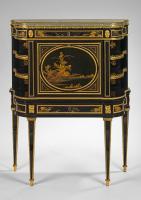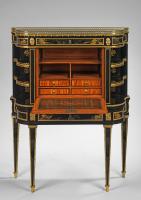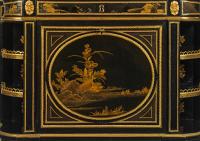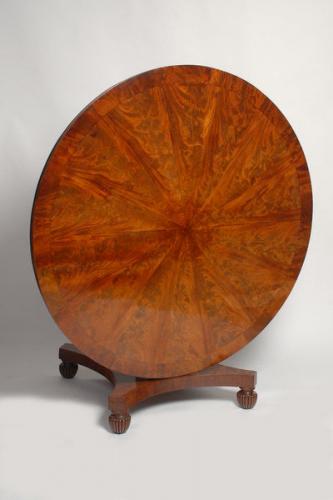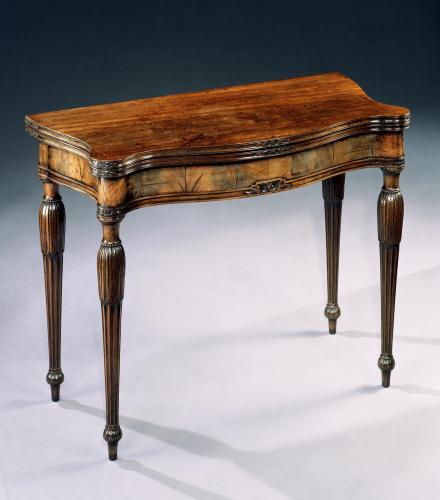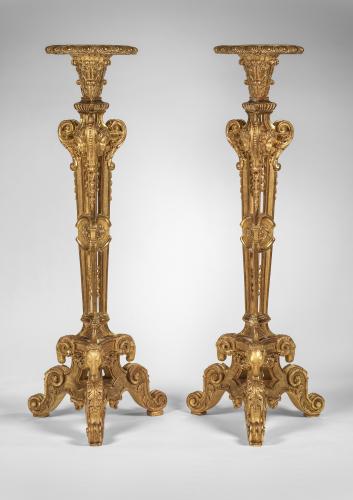
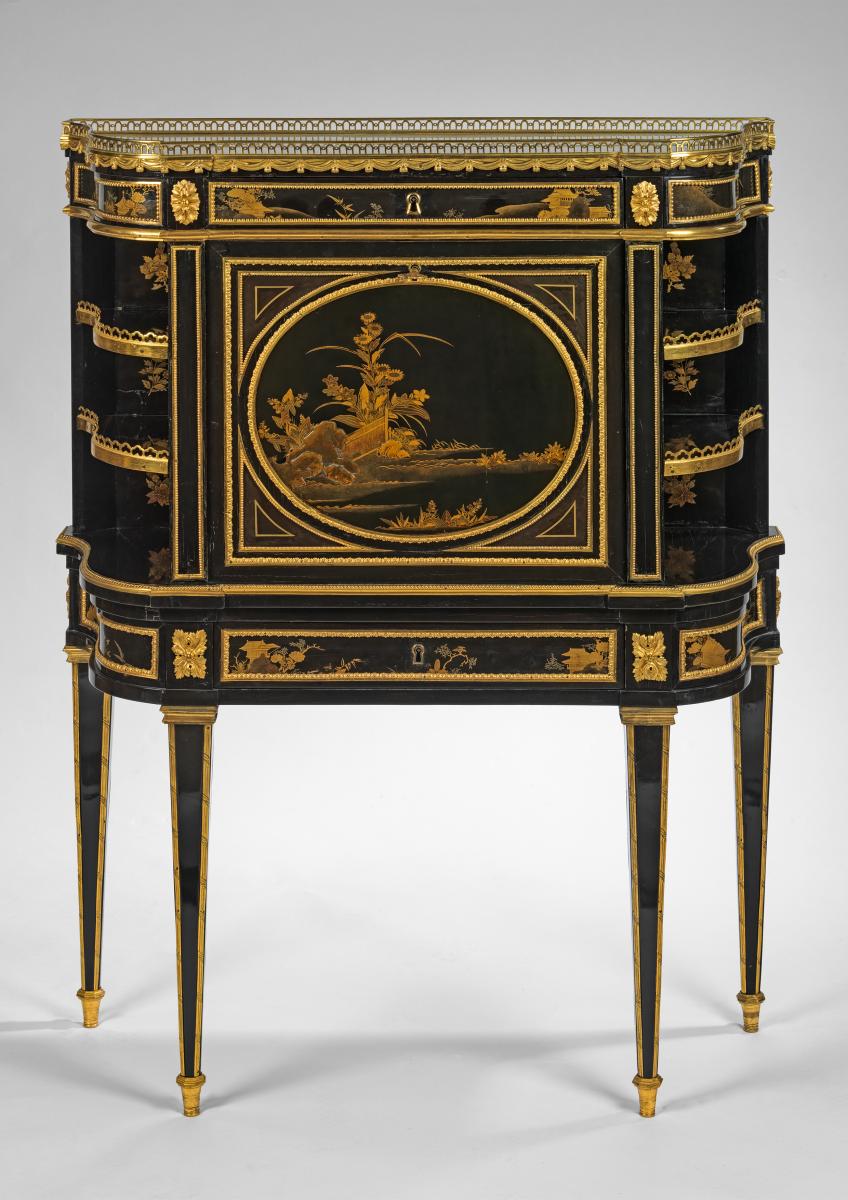
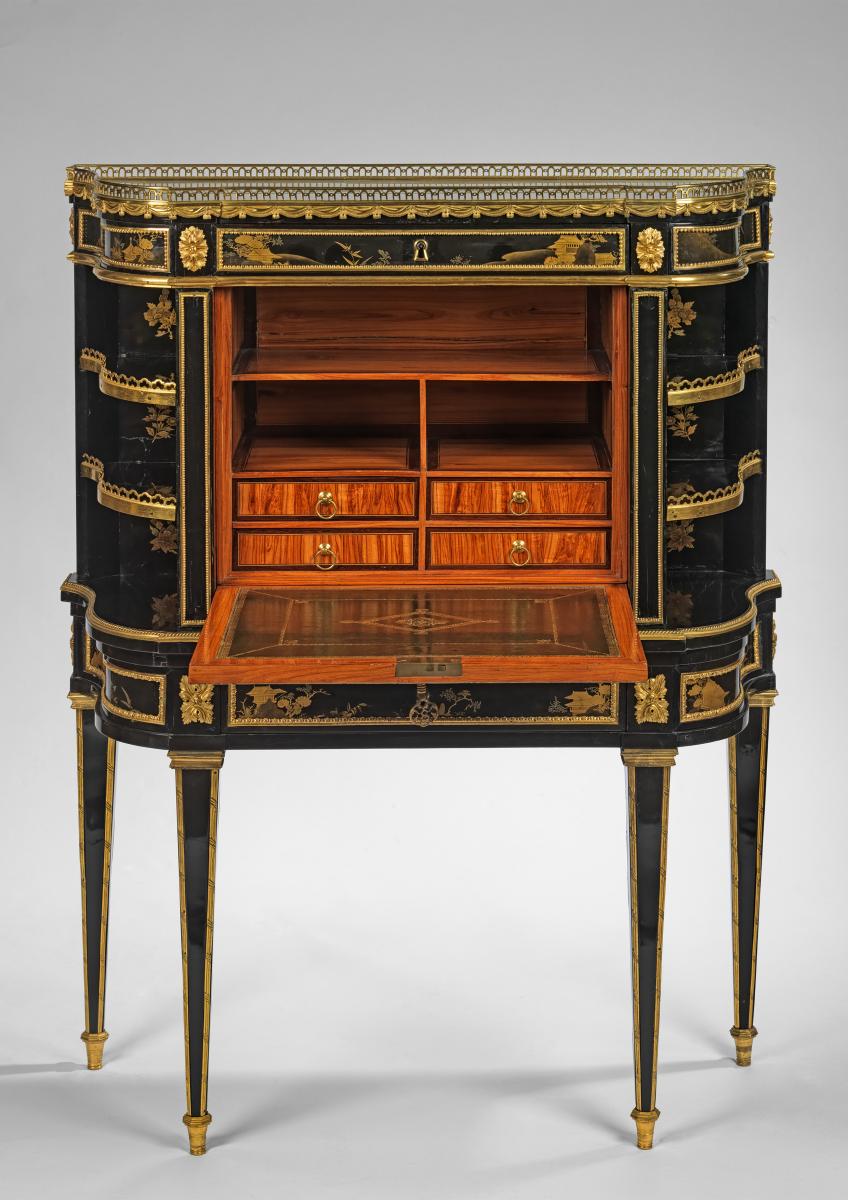
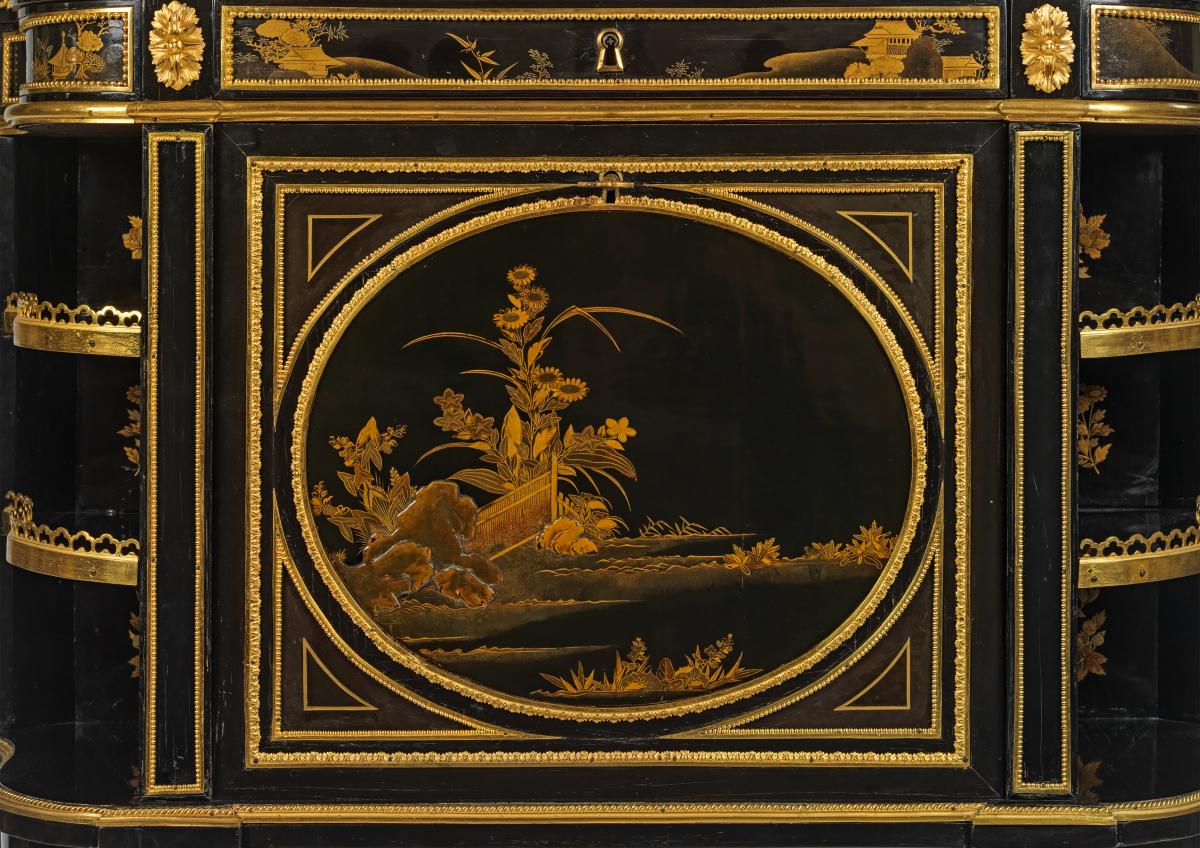
Price on application
This object is eligible for a Certificate of BADA Provenance
The BADA Standard
- Since 1918, BADA has been the leading association for the antiques and fine art trade
- Members are elected for their knowledge, integrity and quality of stock
- Our clients are protected by BADA’s code of conduct
- Our dealers’ membership is reviewed and renewed annually
- Bada.org is a non-profit site: clients deal directly with members and they pay no hidden fees
A Louis XVI Ormolu-Mounted, Ebony and Japanese Lacquer Secretaire by Levasseur Circa 1780.
The shaped veined-marble top is surmounted by a pierced ormolu gallery and tasselled drapery gallery mount above a frieze drawer and a fall-front with central oval panel with flowering shrub against a fence, rockwork, alongside a water landscape, with gilt-bronze leaf-tip and beaded encadrements, enclosing a tulipwood and amaranth veneer interior of four drawers and three compartments, with an English Regency gilt-tooled green leather-lined writing surface, flanked with galleried open shelves above a further central drawer, the whole inset with Japanese lacquer panels with pagodas and trees within ebony borders, on square tapering legs with ormolu ribboned angles, terminating in octagonal sabots, stamped 'E. LEVASSEUR JME' to the left underside
Literature
P. Kjellberg, Le Mobilier Français du XVIIIème siècle, dictionnaire des ébénistes et des menuisiers, 1998, p. 527 illustrated.
Provenance:
The Honourable Lady Baillie (1899-1974), Leeds Castle, Kent.
Partridge Fine Arts, acquired by the previous owner for $275,000 in the late 80s.
Etienne Levasseur, maître in 1767.
This superb secrétaire-à-abattant by Etienne Levasseur, veneered with precious seventeenth-century Japanese lacquer and set with beautifully chased gilt-bronze mounts, was once part of the collection of the celebrated collector and socialite Lady Baillie in Leeds castle, Kent. It relates closely to pieces of furniture usually decorated with plaques of Sèvres porcelain supplied by the marchand-merciers Simon-Philippe Poirier and Dominique Daguerre, such as the secrétaire of this shape incorporating a porcelain plaque dated 1776 and with similar opened shelves to the sides is now at the Wallace collection (inv. F304); and another, circa 1775, formerly in the collection of Baron Nathaniel Mayer von Rothschild (1836-1905) and now in the J. Paul Getty Museum, Los Angeles.
A related example by Martin Carlin with an oval Japanese lacquer panel representing a cockerel and a hen in a gold bira and takamakie ground delivered to the 18th century opera singer Mademoiselle Laguerre (1755-1783) and sold at Christie’s, London, 9 December 1982, lot 74. Another secretaire à abattant attributed to Weisweiler with an oval panel representing a cockerel and a chicken was sold at auction in London, 2 December 1997, lot 93. Etienne.
Levasseur learned his craft with the sons of André-Charles Boulle, probably from A-C. Boulle the younger (1685-1745) or Charles-Joseph Boulle (d. 1754) and by 1765 was established as a privileged craftsman in the faubourg Saint-Antoine at a shop known as 'Au Cadran bleu.' Levasseur was received maître-ébéniste on 2 April 1767 and could count amongst his most important patrons the King's aunts, Mesdames Adélaïde and Victoire at Bellevue, as well as rich collectors, such as the fermier-général Mulot de Pressigny. Etienne Levasseur (père) does not appear to have continued working after the Revolution and died in 1798. Both his son and grandson however followed in his footsteps, perpetuating his specialization in Boulle marquetry furniture well into the 1820s and continuing to use his stamp. Only a few pieces by Etienne Levasseur incorporating lacquer panels are recorded such as the pair of side cabinets now in the Royal Collection (inv. RCIN 2464)and a desk sold from the collection of Ezra & Cecile Zilka at Sotheby’s, New York, 20 November 2020, lot 179.These lacquer pieces by Levasseur were probably commissioned by marchands-merciers such as Dominique Daguerre as no furniture-maker at this time would have had sufficient capital to acquire large and fine Japanese lacquer panels himself. To respond to the demand for pieces mounted with exotic lacquer, marchands-merciers were buying Oriental porcelain, lacquer and other exotic goods, and they incorporated them in the works of art with which they seduced their clients.
Lady Baillie and Leeds Castle
The Hon. Mrs. Filmer, as Lady Baillie then was, in 1926 acquired Leeds Castle, a historic and romantic seat with Royal connections dating back to Saxon times and famously described by the historian Lord Conway as 'the loveliest castle...in the whole world'. Lady Baillie immediately breathed new life into the castle, embarking on extensive refurbishments carried out under the guidance of the legendary French designers Armand-Albert Rateau and Stéphane Boudin of the house of Jansen, creating a celebrated series of revitalized interiors. An informed and educated connoisseur, Lady Baillie was a pioneering collector of the very best French furniture who reached almost iconic status. As a result, in the 1930s Leeds Castle became one of the great society houses of England, with Queen Marie of Romania, Alfonso XIII of Spain and members of the British Royal family frequent visitors alongside stars of stage and screen including Douglas Fairbanks, Errol Flynn and James Stewart. Following her death in 1974, ownership of Leeds Castle passed to the Leeds Castle Foundation, allowing it to be left to the nation in perpetuity.
Dimensions
89 x 34 x 120.5 cm HighThe BADA Standard
- Since 1918, BADA has been the leading association for the antiques and fine art trade
- Members are elected for their knowledge, integrity and quality of stock
- Our clients are protected by BADA’s code of conduct
- Our dealers’ membership is reviewed and renewed annually
- Bada.org is a non-profit site: clients deal directly with members and they pay no hidden fees


